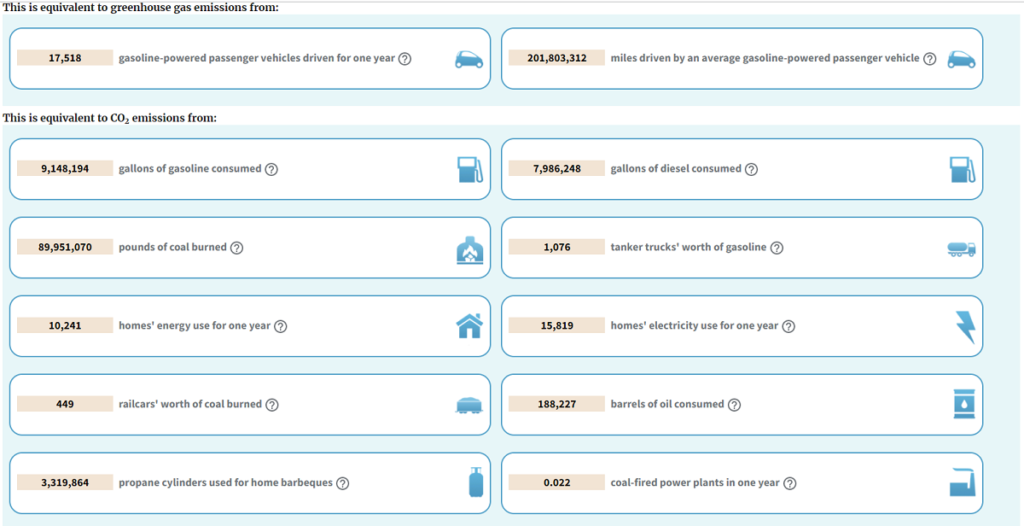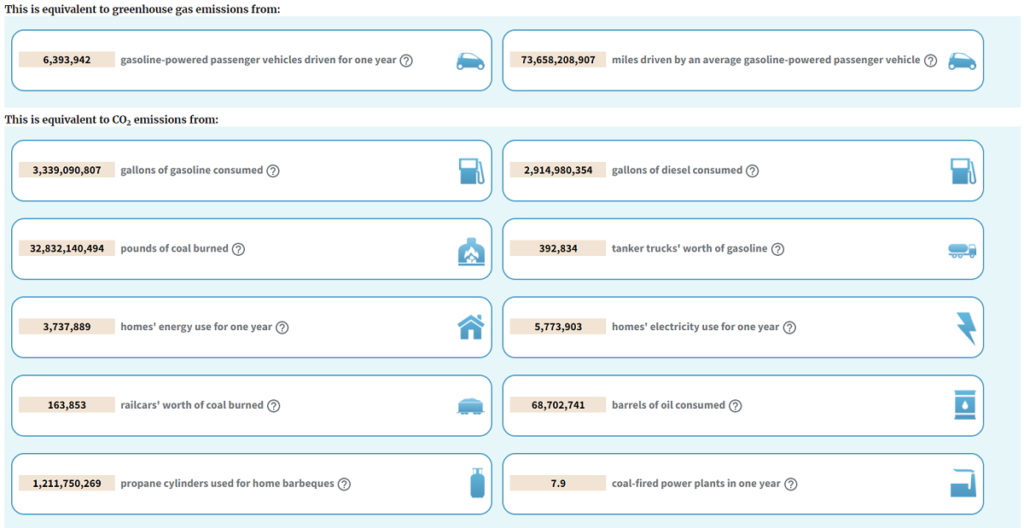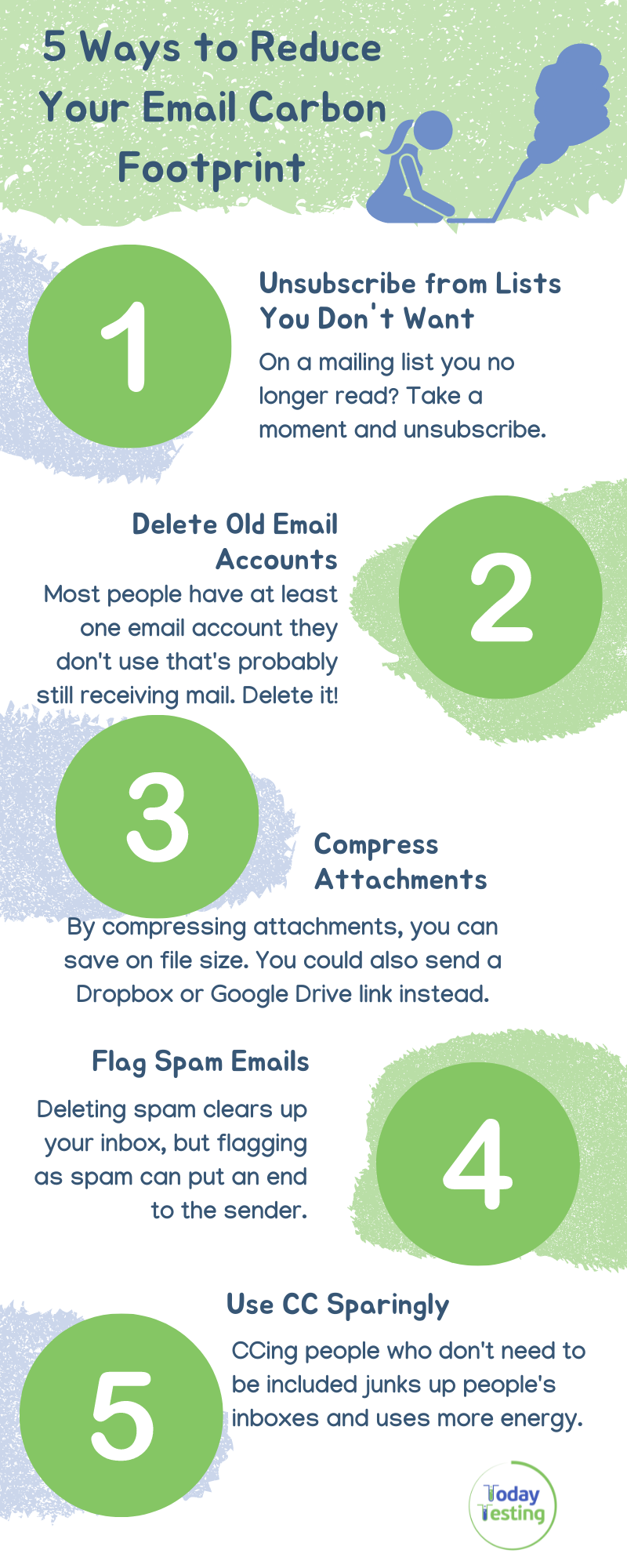The Massive Carbon Footprint of Spam Emails & How to Reduce It - Today Testing

During Earth Month, discussions about reducing our carbon footprints are top of mind. While many immediately think of transportation, manufacturing, and disposable products, there are other, less obvious areas in which our everyday habits affect the environment.
One surprising area that contributes to carbon emissions is our email inbox—not the physical mailbox, but our digital one.
That’s right, we’re talking about email.
You might not realize it, but email has a carbon footprint, and while it might not be as big as some of the other things we mentioned, it certainly adds up with the 319.6 billion messages sent every day in 2021 (and growing!) and it’s still worth considering.
Every time an email is sent, a small amount of carbon dioxide is emitted with the energy being used to run your devices, power your WiFi, and run the data centers and servers that power the internet.
This might all sound a bit ridiculous, but in recent years, we’ve seen stories of French energy regulators asking companies to cut back on email usage and UK officials potentially encouraging residents to stop sending “useless” one-line emails, like “thank you”.
Now, when it comes to email’s carbon footprint, the worst offender is spam.
According to recent figures from Talos Intelligence, 84.8% of all emails sent are spam and they account for the vast majority of all the energy used to send, receive, and read emails.
That’s a lot of wasted energy, and it’s something we can all work to reduce.
But just how big is the carbon footprint of spam? We wanted to find out, so we ran the numbers. The results were more shocking than we expected…
Spam Email’s Environmental Impact: By the Numbers
To calculate the total environmental impact of spam emails, there were a few key pieces of information we had to identify and work from:
- The average spam email has a footprint of 0.3g CO2e, according to the BBC (although this number is likely even higher they argue).
- In 2021, 319.6 billion emails were sent worldwide every single day. If 84.8% of all emails are spam, that means a little over 271 billion spam emails were sent each day last year.
With this information, we could then determine that:
The total daily worldwide carbon footprint of spam email is 81.3 billion g of CO2e (81,300 metric tons).

In 2021, the total annual worldwide carbon footprint of spam email was 29.67 trillion g of CO2e (29,674,500 metric tons).

To further put these numbers into perspective, at 29.7 million metric tons of CO2e emitted annually, if spam emails were their own country, they’d be responsible for more annual emissions than a host of other countries, including Denmark (25.71 million metric tons), Dominican Republic (29.09 million metric tons), Syria (25.57 million metric tons), Cuba (22.94 million metric tons), Lebanon (26.77 million metric tons), Croatia (17.7 million metric tons), and many others.
Not only that, the annual impact of spam emails just trails the carbon footprint of places like North Korea (32.24 million metric tons), Hong Kong (32.43 million metric tons), and New Zealand (33 million metric tons).
Speaking of countries, which ones are the biggest exporters of spam? While you might assume the rankings would align with the population size of the world’s top countries, that’s not exactly the case as you can see in the table below.
| Daily # of spam emails in billions | Daily CO2e emissions from spam emails in mt | Annual CO2e Emissions from spam emails in mt | ||
|---|---|---|---|---|
| USA | 8.13 | 2439.70 | 890,489 | |
| Germany | 7.61 | 2281.97 | 832,918 | |
| Austria | 7.41 | 2223.46 | 811,561 | |
| China | 7.38 | 2213.30 | 807,847 | |
| France | 7.32 | 2194.47 | 801,347 | |
| UK | 7.29 | 2187.84 | 798,562 | |
| Poland | 7.17 | 2149.68 | 784,633 | |
| Russia | 7.10 | 2129.33 | 777,205 | |
| Brazil | 7.06 | 2116.08 | 772,562 | |
| Netherlands | 7.03 | 2108.98 | 769,776 |
How We Can Reduce Our Email Carbon Footprint
While the most important thing that can be done is to go after the spammers themselves , the reality is that email spam isn’t going away any time soon.
With that in mind, there are some simple steps we can all take to reduce our carbon footprints as it relates to email:
- Unsubscribe from any newsletters you don’t want to receive
- Get rid of any email addresses you don’t use or need
- Compress your email attachments when sending messages
- Flag spam emails when you see them
- Don’t unnecessarily CC people who don’t need to be CC’d and create more inbox clutter

New research and initiatives show that many data centers and cloud service providers are increasingly sourcing renewable energy. This shift toward greener energy significantly reduces the carbon intensity of digital communications. Consumers and businesses alike can support providers making these green investments to help further lower the overall environmental impact of email traffic.
Have any questions about our report? Leave a comment below or click here to contact us.
This post may contain affiliate links and we may earn commissions. Learn more in our disclosure.

